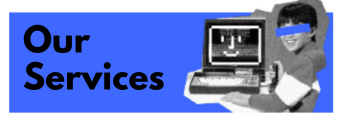What does this mean? Imagine the two halves of your brain as two people walking next to each other and the left person walks upfront, therefore seeing and experiencing everything first, and being the first respondent to the world around them.
The unstoppable progress of AI especially causes anxiety for our dominant left brain because AI more readily competes with left-brain thinking. What our left brain does is to simplify our view of the world around us – it creates a model of reality which we can then use, manipulate and get things done. In contrast, the right brain sees the whole, the proverbial forest from the trees, and it sees the new, bringing fresh ideas and perspectives. The right brain is also essential in interpreting context, the real world around us, through the information we gather through our senses. Furthermore, the right brain is a source of wisdom about ourselves and others. It is the centre of our capacity for empathy, the ability to share and understand the emotions or others, and as such essential for our social lives. Crucially, these are all qualities that machines will find it hard to ever possess. With the right brain, entrepreneurs and their teams can strengthen their unique capabilities, distinguish themselves, and thrive alongside tech at work.
Here is an illustration of the difference: imagine your colleague asks, ‘How was your evening?’. You might say, ‘I had a wonderful dinner with my husband, great food and conversation. We tried a new delicious Ottolenghi recipe’. Your colleague might then ask for the recipe, hoping to make it themselves. It is the same for every moment. We aim to capture the moment by dividing it into parts, logical and methodical, and in doing so we are able to utilise and share it. This is the unique capability of our left brain, to make the world tangible for us, so we can exert influence and control over it. Still, that representation will always be a simplification.
If instead you had replied, ‘I had a wonderful dinner; it was like a trip into our own Narnia’, you would have expressed something different about the evening: the magic of the moment, the richness of sensations, and the depth of feeling. The images through which the right brain communicates facilitate this more holistic perspective. As a result, you would likely have had a different conversation about the evening with your colleague and exchanged something other than recipes.
Neither the left nor the right brain interpretation is better or more valuable, but they are fundamentally different, and it is this difference which is key to our understanding of how entrepreneurs can use the qualities of the right brain to their advantage.
As the above illustrates, the right brain processes and communicates in images and to invite right-brain participation, evoking visuals in a discussion is necessary. It’s not for nothing that we say “a picture is worth a thousand words”. There are many ways we can actively invite right-brain participation, including the use of metaphors, simple drawings, and deliberately activating our senses by using questions such as “what do you see” instead of “what do you think”.
Not everyone thinks immediately in images, yet you can guide someone, for example, by asking what landscape, colour, sports, music or animal comes to mind when thinking about a person or a situation.
The strengths of right-brain thinking can also specifically help to overcome AI anxiety. While the left brain helps us to be effective, it can also get trapped in its own system, paying attention only to what it already knows and amplifying concerns. When we are stuck in our thinking – such as a worry your team might have that AI will take away their jobs – we need the right brain to unlock new ideas, insights and perspectives.
For example, we can consider what image captures the essence of our work. Recently, a project manager defined their role as “I am the captain, this is my ship, and she won’t sail as fast without me”. If they had said “I am monitoring the work”, it might have seemed as if AI could take over their role quite easily. Through this metaphor, the discussion can further evolve to how AI can be a useful team member onboard, which highlights another important right-brain quality – the natural ability to consider “we”. With our right-brain, we can more easily see the potential for collaboration instead of competition.
In a nutshell, when entrepreneurs lead with the right brain they see more, think differently and bring new insights. They are more in touch with their environment and with the people around them. In a world where the problem-solving abilities of AI are increasing every day, entrepreneurs need to get smarter too, and capitalise on the human qualities and skills they – and their teams – can bring to the workplace. The right brain is like your personal genie in the bottle – an enormous power for you, and your team, to release and use.
Yda Bouvier is an Executive Coach and the author of Leading with the Right Brain.











